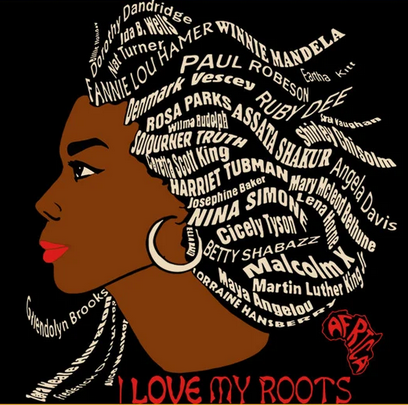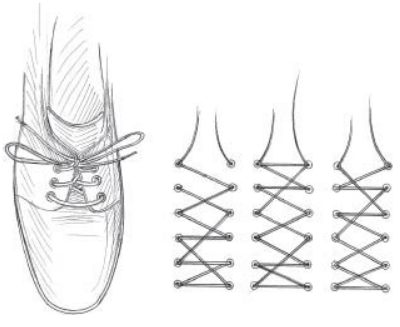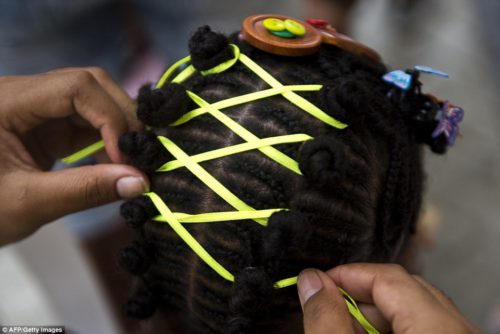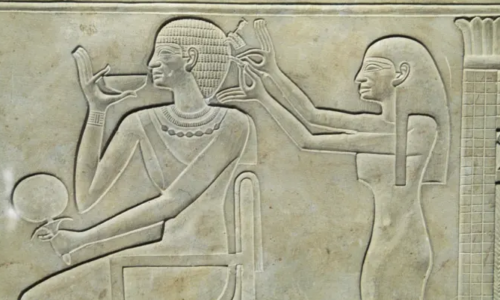What does your hair communicate? I don’t mean about you, I mean communicate on its own. Can you think of it as a canvas to write a story, or send an ephemeral signal?

During the Cold War the CIA allegedly trained agents to message using variations of shoe lacing, among other clothing alteration strategies.
A “Recognition Signals” instructional manual was distributed in 1953 by a magician named John Mulholland (MKUltra Subproject Number 4, as reproduced by The Official CIA Manual of Trickery and Deception by
H. Keith Melton and Robert Wallace):

The first suggestion is to have the shoelace run as a double strand through the
eyelets nearest the instep, i.e., toward the toes. First, the shoestring is cut in half. Then
the tip of one lace is pushed from the inside of the shoe up through one hole, across the
instep, and down through the opposite hole. The tip of the other half is treated in the
same way but is started from the opposite side. While the cut ends still are outside the
shoe, each is tied, with a slipknot, around the other lace. The tips of the laces then are
drawn so as to have the two knots inside the shoe and each by one of the eyelets. (See
illustration.) The shoe then is laced in the normal way. For one who is looking for such a
possibility, the double lace is easy to distinguish. It will never be seen by one not
particularly looking for it. Though it will not be noticed, it is without reason except to
mend a broken lace were the shoes to be examined.Because shoelaces are inserted in shoes in three standard ways, any deviation in
these ways becomes useful for signaling. On other pages are illustrations of the standard
ways of lacing shoes and several ways in which shoes could be laced but never are. None
of these alternate ways will attract attention, yet each is very obvious to one looking for
such a signal.
The manual goes on to say things like a neck tie should expose two buttons on a shirt so that the sizes can be alternated to transmit a message. Clothing indeed can easily be altered and be subtle enough to communicate without detection.
So what about hair?
What this “old” manual seems to never mention, which I find a bit strange, is how hair designs can factor into secret messaging.
Even though it has been used like clothing as a signaling device for hundreds if not thousands of years, somehow hair doesn’t show up in 1950s American spy tactics.
Afro-Columbian women, as reported in 2011 by the Washington Post for example, encoded “messages of freedom” into their hair style.
In the time of slavery in Colombia, hair braiding was used to relay messages. For example, to signal that they wanted to escape, women would braid a hairstyle called departes. “It had thick, tight braids, braided closely to the scalp and was tied into buns on the top.
And another style had curved braids, tightly braided on their heads. The curved braids would represent the roads they would [take for] escape. In the braids, they also kept gold and hid seeds which, in the long run, helped them survive after they escaped.
A contest in 2015 called ‘Tejiendo Esperanzas‘ (Knitting Hope), celebrating emancipation from slavery, was even reported by the DailyMail with laces woven into braids.

This kind of multi-braid hair style was developed and worn over thousands of years, including by world famous royalty like Cleopatra or Nefertiti.

One might think that it thus would figure as a classic or common style and remain unnoticed.
Aside from feeding into racial ideologies and discrimination based on appearance, some research indicates that details of “messaging” hair styles may have been ignored until much later in history if noticed at all.
My analysis contradicts the finding that eighteenth-century advertisements “very frequently” described runaway slaves’ hair. It may be that longer post-Revolutionary and nineteenth-century advertisements were more likely to focus on details like hair. It may also be that the often-cited compelling descriptions of African American hairstyles were exceptions rather than the rule.
Perhaps some of the secrecy embedded into hair styles could be attributed also to “head rags” or “kerchief” used to hide hair, often from requirements to keep the head under cover.
Concealment was driven not least from late 1700s racism in America that shamed “kinky” and curled hair, leading to ideas like “tignon” of the Louisiana territory being required by 1785 law, or even structured signaling using head coverings.
A South Carolinian who trafficked humans indeed regulated things like a white turban be worn by a chief house servant, obliterating any appearance of natural black hair, while house servants had to cover with a bandana.
…the headwrap was to maintain Southern white power in a society based economically and socially on racial slavery. Noteworthy in this respect are the ordinances which regulated African American dress throughout the South during the eighteenth century. In effect, whites used these dress codes to outwardly distinguish those without power from those who held it.
Underneath, however, remained a “wrapping” often using thread or string with hair parted into sections and rows. Perfect for concealing a message, like a letter inside an envelope.
With all that in mind, I’ll now give you three guesses why thousands of years of design and messaging with black hair is never mentioned in the CIA guide to secrets.
And also you should guess why in America it’s “illegal to braid hair without a license“.
To get a license, Jestina would have to spend more than a year in cosmetology school. Tuition would cost $16,000 dollars or more.
Hint: it’s not consumer safety or harm, as argued in the report, although it is related to fear of what is broadly messaged by corn rows (e.g. black liberty and freedom of expression).